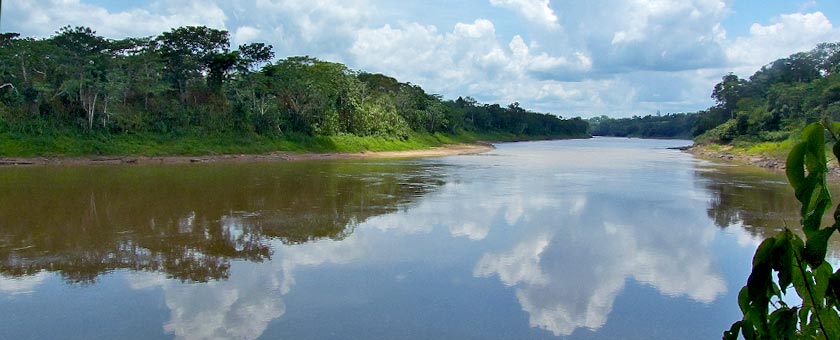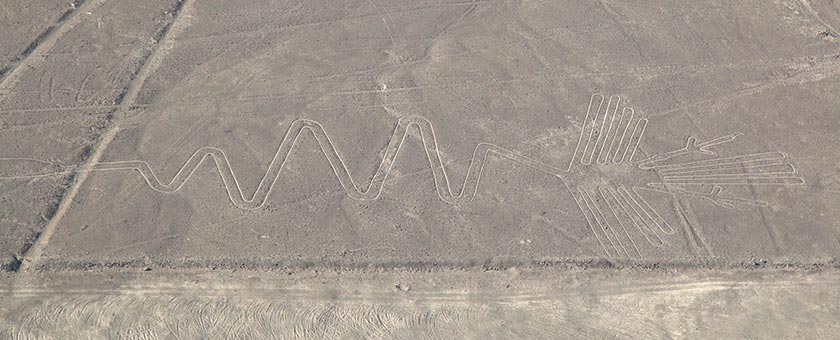203 786 2345 office@eturia.com
Peru is a real epic fantasy. Imagine forgotten timeless temples amongst the forest, the imperial sunburnt graves, wrapped in spider webs, as well as ancient treasures of immeasurable value. Imagine exploring the Amazonian jungle or rebuilding the Incas road through the Sacra Urubamba Valley, between Cusco – the city of the sun or the center of the world, as it was once called, and Machu Picchu. Imagine Nazca’s drawings, one of the great enigmas of the world. And now stop dreaming and start doing. Discover a wealth of different landscapes and colors; travel back in time to ancient Peruvian civilizations and share the great cultural heritage of the Peruvian people. Many Peru’s destinations and experiences can only be explained by seeing them in the flesh.
Name: Republic of Peru
Capital: Lima
Location: South American South Pacific Ocean, between Chile and Ecuador
Main towns: Arequipa, Trujillo, Chiclayo, Piura, Iquitos, Cusco, Huancayo, Chimbote, Pucallpa, Puno, La Rinconada
Currency: Nuevo sol – PEN
Timezone: UTC-5
Tipping: Tipping is not a big part of Peruvian culture but there are times when a tip is appropriate, if not necessarily obligatory. The word for “tip” in Spanish is ‘propina’. Tipping is customary in top end hotels. The drivers don’t expect it, and they are probably overcharging you anyway. A 10% tip is standard in larger, more elegant restaurants, but this may be added on to the bill. No tip is necessary in budget eateries such as the family run menus.
Voltage: Network parameters: 220 V / 60 Hz; A, C socket is used, we recommend that you have adapters.
Peru is a blessed land, home to the condor, cradle of some highly advanced ancient civilizations like Nortechico, Moche and Chimu, the country with the largest variety of fish species in the world, with beaches yet to be explored and people who seem to wear nostalgia for the Incas Empire.
Must see:
Peru’s climate has two main seasons – wet and dry – though the weather varies greatly depending on the geographical region. Temperature is mostly influenced by elevation: the higher you climb, the cooler it becomes.
The peak tourist season is from June to August, which coincides with the cooler dry season in the Andean highlands and summer vacation in North America and Europe. This is the best (and busiest) time to go trekking on the Inca Trail to Machu Picchu, or climbing, hiking and mountain biking elsewhere.
People can and do visit the highlands year-round, though the wettest months of December to March make it a wet and muddy proposition.
Many of the major fiestas, such as La Virgen de la Candelaria, Carnaval and Semana Santa, occur in the wettest months and continue undiminished even during heavy rainstorms. On the arid coast, Peruvians visit the beaches during the most hot and humid time of the year, from late December through March. In central and southern Peru, the coast is cloaked in garúa (coastal fog) for the rest of the year. Although the southern beaches are deserted then, the coastal cities can be visited at any time. In the north, the coast usually sees more sun, so beach lovers can hang out there year-round.In the eastern rainforest, of course, it rains. The wettest months are December through May, but even then it rarely rains for more than a few hours at a time, so there’s still plenty of sunshine to enjoy. Follow the locals’ example: briefly take cover during the heaviest downpours.
 At 2,430 meters altitude, the enigmatic Machu Picchu has dominated the narrow and deep valley of the Urubamba River for over five centuries. Built in 1450 by the Pachacuti Incas sovereign, Machu Picchu was abandoned by its inhabitants in 1572, forgotten and rediscovered in 1911 by historian Hiram Bingham.
At 2,430 meters altitude, the enigmatic Machu Picchu has dominated the narrow and deep valley of the Urubamba River for over five centuries. Built in 1450 by the Pachacuti Incas sovereign, Machu Picchu was abandoned by its inhabitants in 1572, forgotten and rediscovered in 1911 by historian Hiram Bingham.
 In the Amazon forests, lianas, orchids and bromeliades compete for space on the upper branches, and a large variety of species share their home, many endemic and, unfortunately, many endangered. A trip in the Amazon will feed your curiosity and your wanderlust.
In the Amazon forests, lianas, orchids and bromeliades compete for space on the upper branches, and a large variety of species share their home, many endemic and, unfortunately, many endangered. A trip in the Amazon will feed your curiosity and your wanderlust.
 On the plateau, stylized human and zoomorphic figures are represented. The largest drawing reaches a length of 270 m. Although the drawings resemble some stylistic motifs of the Paracas Culture, their origin is attributed to the Nazca culture, flourishing between the years 200, and 700 B.C.
On the plateau, stylized human and zoomorphic figures are represented. The largest drawing reaches a length of 270 m. Although the drawings resemble some stylistic motifs of the Paracas Culture, their origin is attributed to the Nazca culture, flourishing between the years 200, and 700 B.C.
 Located in the southern area of the country at an altitude of 3,300 metres, the Peruvian city is the capital of the Province of Cusco and the former capital of the Incas Empire. Added on the UNESCO Heritage List in 1983, Cusco, and discovered in 1533 by the Spanish conquistadors, Cusco is transformed into a colonial city. Churches, administrative and residential buildings, a university and an imposing cathedral are built by the conquistadors.
Located in the southern area of the country at an altitude of 3,300 metres, the Peruvian city is the capital of the Province of Cusco and the former capital of the Incas Empire. Added on the UNESCO Heritage List in 1983, Cusco, and discovered in 1533 by the Spanish conquistadors, Cusco is transformed into a colonial city. Churches, administrative and residential buildings, a university and an imposing cathedral are built by the conquistadors.
 It is the largest lake in South America – it occupies 8.372 square kilometres. Fuelled by about 27 rivers, water from precipitation and melting snow on the slopes of the mountains, Titicaca communicates with Lake Poopo through the Desaguadero River. The legend says that Inti – God of the Sun sent Manco Capac and Mother Ocllo here to establish a new civilization.
It is the largest lake in South America – it occupies 8.372 square kilometres. Fuelled by about 27 rivers, water from precipitation and melting snow on the slopes of the mountains, Titicaca communicates with Lake Poopo through the Desaguadero River. The legend says that Inti – God of the Sun sent Manco Capac and Mother Ocllo here to establish a new civilization.